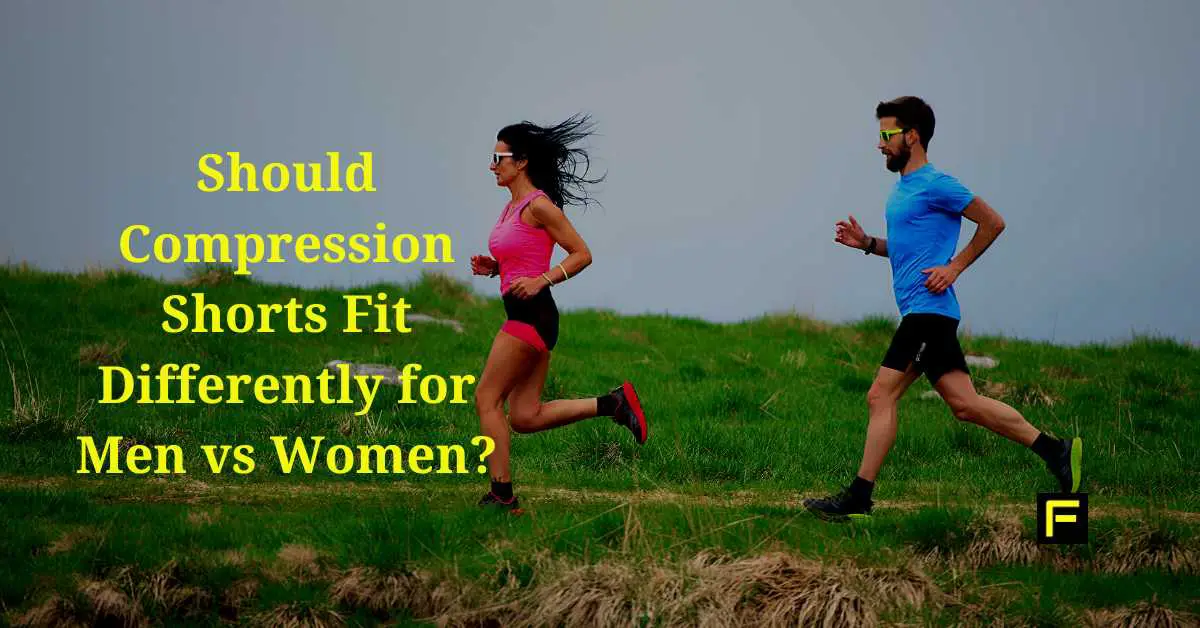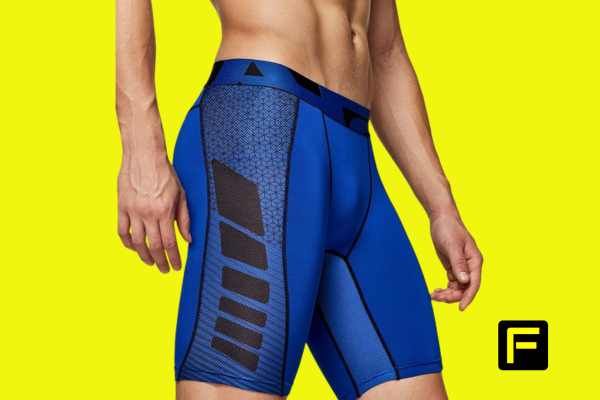Should Compression Shorts Fit Differently for Men vs Women? When considering compression shorts, it’s natural to wonder if they should fit men and women differently. The answer is yes, due to the distinct anatomical structures of male and female bodies.
Compression shorts are designed to offer support and improve circulation during physical activities, which means that the way they hug and compress the body significantly impacts their effectiveness. Both comfort and performance hinge on selecting the right fit that caters to your body type.
For men, compression shorts are often constructed with a focus on supporting the thigh and groin area, whereas for women, the design may emphasize waistband comfort and fit around the hips.
The difference in muscle composition and body shape requires manufacturers to consider specific fit adjustments to ensure that compression shorts deliver their intended benefits.
Therefore, individuals must understand their body’s unique needs and seek out compression shorts that are tailored to provide optimal support without restricting movement or causing discomfort.
Key Takeaways
- Compression shorts should fit men and women differently to cater to unique anatomical needs.
- Selecting the appropriate fit enhances comfort and improves athletic performance.
- Specific design adjustments ensure optimal support and functionality for each gender.
Should Compression Shorts Fit Differently for Men vs Women?
Basics of Compression Shorts
Compression shorts are tightly fitting garments designed to support your muscles during physical activity. They can be beneficial for athletic performance and recovery.
Purpose of Compression Shorts
Compression shorts serve several key functions:
- Enhanced Blood Circulation: By applying pressure to your muscles, these shorts aim to improve blood flow, which can aid in performance and recovery.
- Muscle Support: They provide support to your muscles, potentially reducing muscle fatigue and strain.
- Moisture Management: Many compression shorts are made from moisture-wicking materials to keep you dry and comfortable.
General Fit and Function
When selecting compression shorts:
- Fit: Look for a snug, but not constricting, fit that feels like a second skin. This means they should be tight enough to provide the benefits of compression without restricting movement or being uncomfortable.
- Function: The material should allow a good range of motion and contain moisture-wicking properties to keep you cool and dry.
It’s important that your compression shorts fit your body well to take advantage of their properties. Correctly fitted compression shorts can aid in your athletic activities by not only supporting your muscles but also by potentially enhancing your overall performance.
Anatomical Differences
When selecting compression shorts, your comfort and effectiveness hinge on considering the anatomical differences between genders. This helps ensure a proper fit tailored to your body’s unique shape.
Male-Specific Considerations
For men, compression shorts are designed to offer support and a snug fit around the pelvic region. Key areas to focus on when choosing the right pair include:
- Support: The crotch area should provide firm support without causing discomfort.
- Fit: Look for a waistband that sits flat and snug but doesn’t dig into the skin.
Panel designs or seams should accommodate the male physique to prevent chafing.
Female-Specific Considerations
Women’s compression shorts typically provide a contoured fit that supports the hips and thighs. When shopping for compression shorts, pay attention to the following:
- Waistband: It should sit comfortably without rolling down or pinching.
- Cut: A design that respects the wider hip area to ensure shorts stay in place without restricting movement.
Materials must provide sufficient stretch to conform to the female body shape.
Design Variations
When selecting compression shorts, it’s important to consider that men’s and women’s options offer different features tailored to each body type. These distinctions are intended to enhance comfort and performance.
Men’s Compression Shorts Features
- Material Placement: Your men’s compression shorts typically have reinforced material in the groin and hamstring areas for added support.
- Waistband Design: Look for a waistband that’s designed to stay in place without rolling or cutting into your skin during activities.
Women’s Compression Shorts Features
- Contour Fit: Your women’s compression shorts often feature a wider waistband and contoured stitching to accommodate wider hips and a narrower waist.
- Length Options: You’ll find that women’s shorts come in various lengths for different levels of coverage and style preferences, such as thigh-length varieties which can be suitable for various activities.
Measuring for the Right Fit
When selecting compression shorts, precise measurements of your body are crucial. Use a cloth measuring tape and jot down your numbers to ensure the best performance and comfort of your compression wear.
Measuring Men’s Shorts
To measure for men’s compression shorts, locate your true waist. This is the narrowest part of your torso, typically just below the rib cage and above the belly button. Make sure the tape is horizontal around the waist and comfortable, not tight. For the correct inseam, measure from the crotch to where you want the shorts to end on your leg.
- Waist Measurement: Measure around your true waist.
- Inseam Measurement: Measure from crotch to the desired leg length.
Here’s a quick guide:
| Part to Measure | How to Measure |
|---|---|
| Waist | Horizontal tape around the true waist |
| Inseam | From crotch to desired end point |
For example, if looking for guidance specifically on men’s shorts, refer to a size guide for male athletes.
Measuring Women’s Shorts
For women’s compression shorts, measure around the smallest part of your waist, then measure the hips at the widest point. Women’s shorts often consider the hip measurement more heavily than men’s due to differences in body shape. The inseam is similarly measured from crotch to where the shorts will end.
- Waist Measurement: Measure at the narrowest part of your waist.
- Hip Measurement: Measure at the widest point of your hips.
- Inseam Measurement: Measure from crotch to the desired end point.
Here’s a simplified table for your reference:
| Part to Measure | How to Measure |
|---|---|
| Waist | Narrowest part, typically above hips |
| Hips | Widest part, usually around the buttocks |
| Inseam | From crotch to the bottom of the shorts |
Discover the specific details for women’s shorts in the VENUM size guide.
Material and Fabrication
When you’re considering compression shorts, the material and fabrication are crucial factors that contribute to their fit and function. Your comfort and the effectiveness of the compression primarily depend on the fabric blend and the quality of construction.
Materials Commonly Used:
- Nylon: Offers durability and excellent resistance to wear and tear.
- Polyester: Known for its strength, quick-drying capabilities, and resistance to shrinking and stretching.
- Spandex: Provides the essential elasticity to ensure the shorts compress properly.
Benefits of Material Choices:
- Nylon: Your shorts will last longer, even with rigorous activities.
- Polyester: You’ll appreciate how quickly it dries and retains its shape over time.
- Spandex: Essential for that snug fit that boosts muscle support and efficiency.
When it comes to the fabrication itself, look for features like flatlock seams which can prevent chafing and enhance your comfort. Also, consider the compression level, often measured in mmHg, where a higher number means more pressure applied by the garment.
Men’s and women’s compression shorts often differ in their cut and design to accommodate different body shapes. However, the material quality and the way the shorts are constructed should consistently prioritize comfort and compression across all products. It’s about finding what works best for your body type and your athletic needs.
Impact on Performance and Comfort
When choosing compression shorts, both men and women often wonder if the fit affects their performance and comfort. Comfortably snug compression shorts can provide beneficial muscular support and may improve circulatory benefits, aiding in performance during physical activities.
Men’s Compression Shorts: You should feel a firm compression without restriction, allowing full range of motion. They are designed to support your quads, hamstrings, and glutes, and usually feature a longer inseam.
- Support: Targeted support to reduce muscle fatigue.
- Range of Motion: Stretchable material for maximum movement.
- Inseam: Typically longer to stay in-place and reduce chafing.
Women’s Compression Shorts: These are crafted to contour specifically to your body, offering compression and support to the muscles, with a focus on comfort and a flattering fit.
- Contoured Fit: Tailored to the female form for better fit.
- Muscle Support: Aims to reduce vibration and strain.
- Waistband: Often wide for comfort and to avoid digging in.
For both genders, a general rule is that your compression shorts should feel tight but not uncomfortable. The level of compression must be adequate to ensure the shorts stay in place and maintain consistent pressure on the muscles but should not impede blood flow or cause discomfort.
To test if the compression shorts fit well, try a few dynamic movements. The shorts should stay in place without sliding or rolling up or down, which can be distracting and lead to discomfort or a loss in performance. Remember, the right fit will vary among individuals, so it’s important that you try different sizes and styles to find what works best for your body and sport.
Care and Maintenance
Taking care of your compression shorts is crucial to ensure they maintain their elasticity and provide the proper support over time. Here’s how you can keep your compression wear in top condition:
-
Wash Carefully: Always follow the care instructions provided with your compression shorts. Typically, it’s best to wash them in cool water and use a gentle cycle on your washing machine.
-
Avoid Heat: High temperatures can damage the fibers, so avoid using hot water and refrain from putting your compression shorts in the dryer. Instead, air dry them away from direct sunlight.
-
No Bleach or Fabric Softeners: These products can break down the material of your compression shorts and reduce their compressive qualities. Stick to mild detergents.
-
Rotate Pairs: If you wear compression shorts regularly, consider having multiple pairs. Rotating them will allow each pair to rest between uses, extending their life.
-
Proper Storage: Keep your shorts unfolded and in a cool, dry place. If you fold them, especially with other heavy items on top, it can affect the material’s quality and shape.
| Don’ts | Do’s |
|---|---|
| Do not iron. | Air dry your compression shorts. |
| Do not expose to direct heat. | Follow the specific wash instructions. |
| Do not wring out aggressively. | Use a mild detergent. |
Remember, proper care will keep your compression shorts effective and comfortable during each use.
Frequently Asked Questions
In this section, you’ll find answers to common queries regarding the fit and function of compression shorts for men and women, and how these may differ based on gender-specific needs.
How do compression shorts benefit male athletes?
Compression shorts offer support and may enhance performance for male athletes by reducing muscle fatigue and providing a secure fit that allows full range of motion.
What purposes do compression shorts serve for women?
For women, compression shorts can provide comfort, support, and may help in reducing muscle soreness during and after workouts, particularly in high-intensity and impact sports.
How should compression shorts fit differently between genders?
The fit of compression shorts should cater to different body shapes; men’s shorts are often tailored to fit around the male physique, while women’s are designed to accommodate wider hips and a narrower waist.
Are there specific benefits of high waisted compression shorts for women?
High waisted compression shorts for women can offer additional support and coverage around the waist and abdomen, which some may find helpful for core stability and comfort during workouts.
Could wearing compression shorts have any negative effects on one’s health?
If compression shorts are too tight, they may restrict circulation or cause chafing; it’s vital to ensure a snug fit that promotes blood flow without being constrictive.
Is it acceptable for men to use women’s athletic shorts for their workouts?
While men can use women’s athletic shorts, they may not provide the optimal support or fit for the male body; it’s best to choose shorts designed for your body type to enjoy the full benefits.

Rick Huey is a fitness writer who has dedicated his life to living an active lifestyle. With more than 30 years of experience in the fitness industry, Rick is a respected contributor for FitFab50.com, where he shares his wealth of knowledge with a wide audience. His dedication to promoting the benefits of living an active lifestyle has inspired many people to pursue their own fitness journeys with enthusiasm and dedication.

